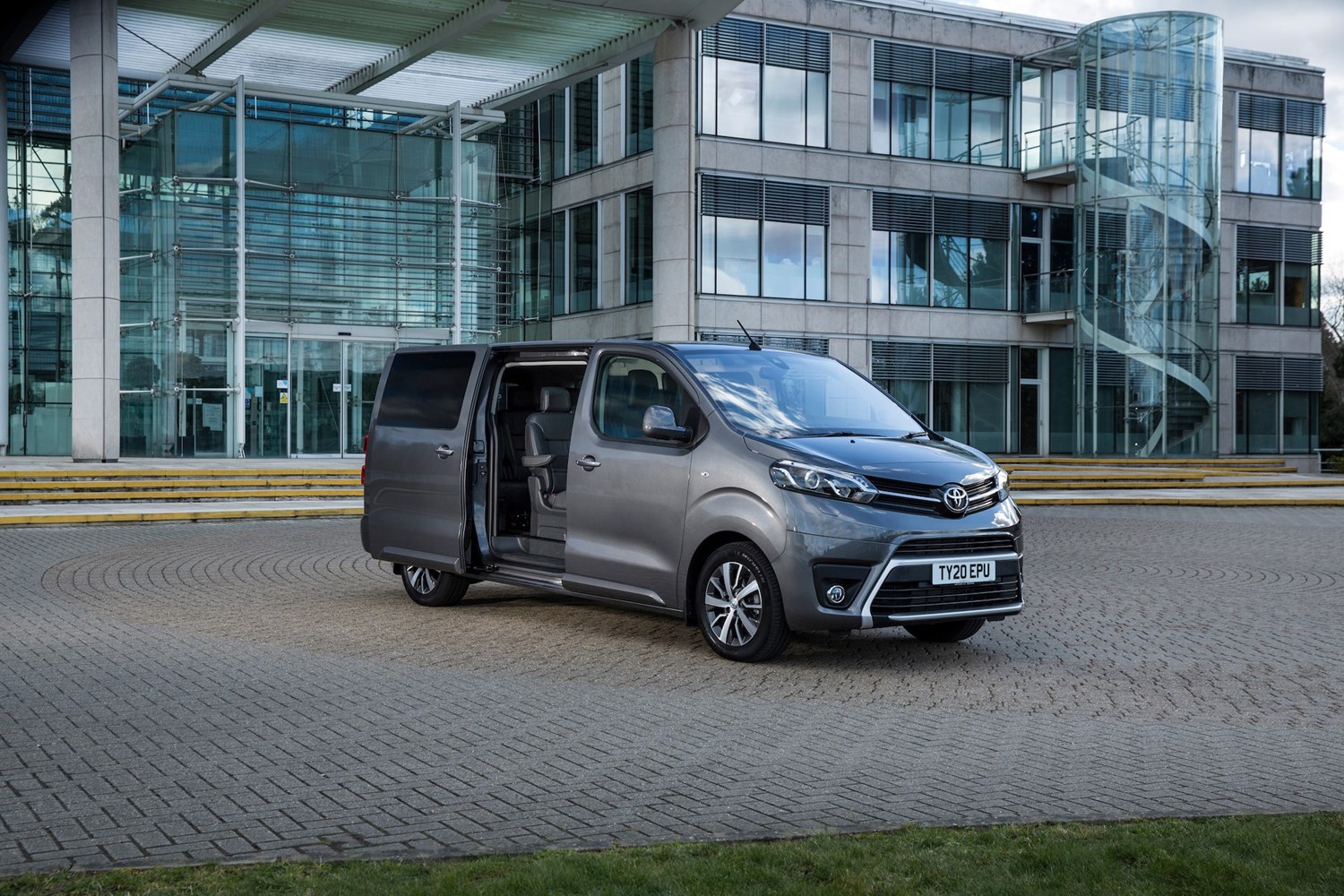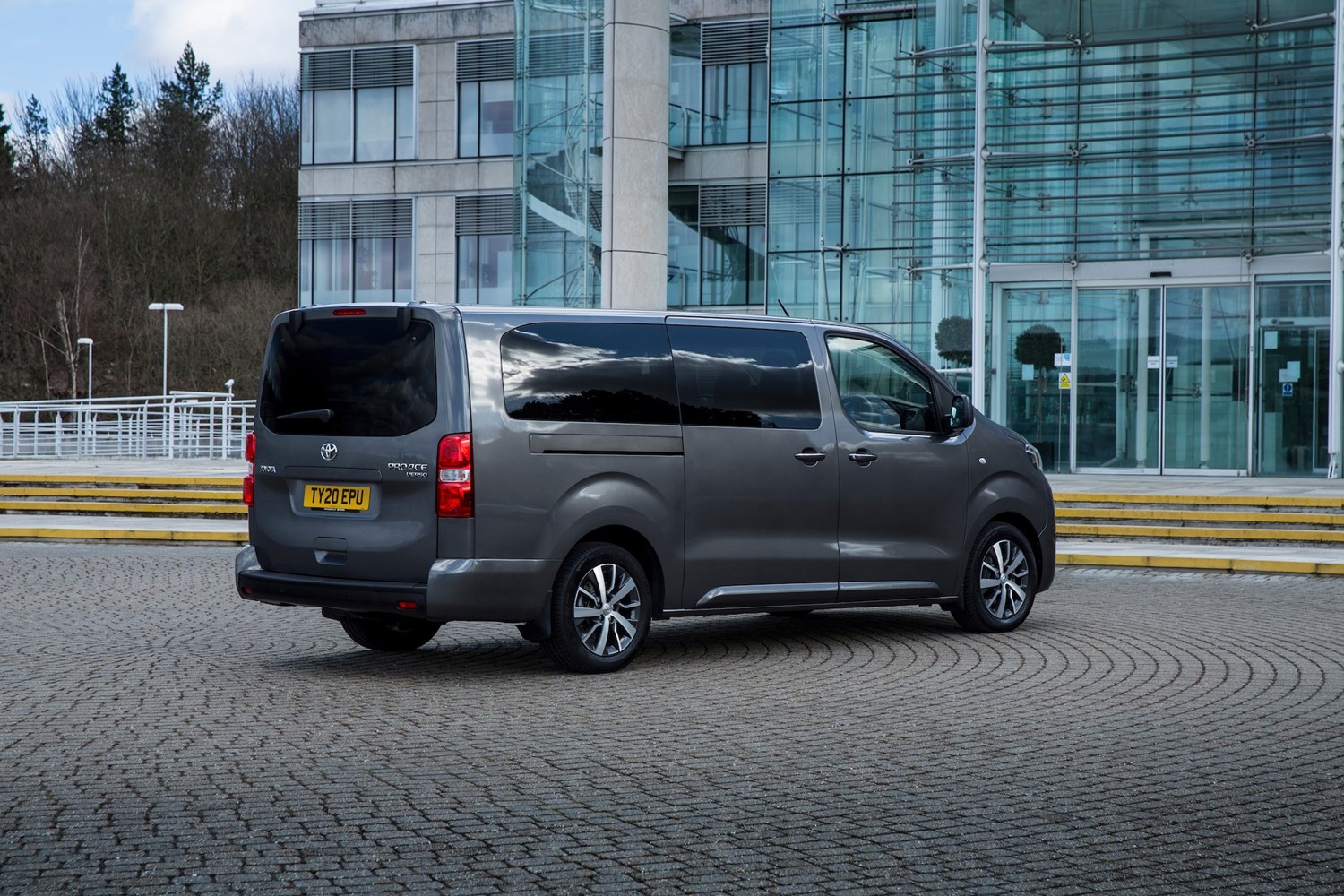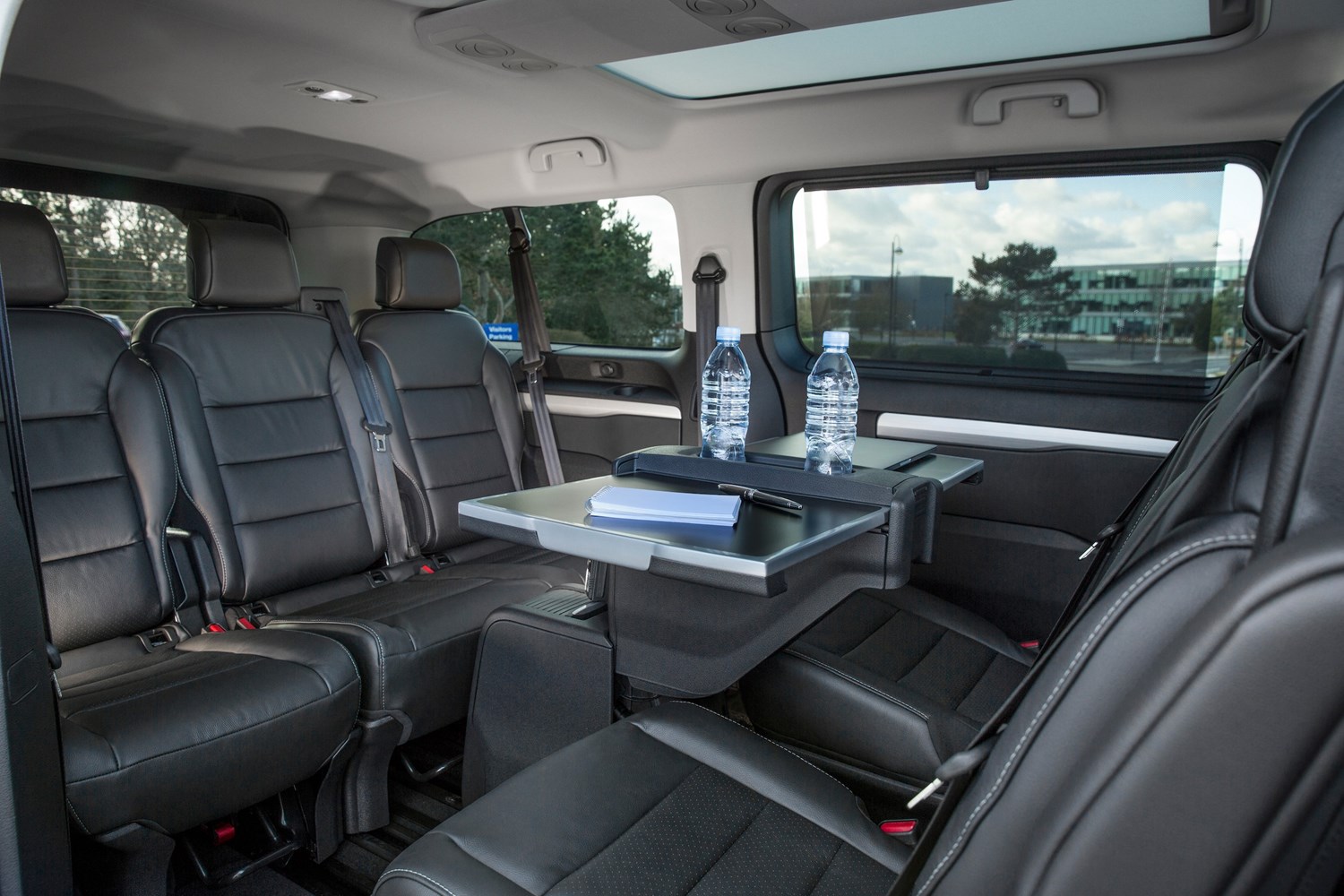Space and practicality
Space is where the Proace absolutely excels, and there are few roomier cars on sale today. You can choose it in Compact, Medium or Long guise, which are 4.6m, 4.9m and 5.3m long respectively. Strangely, the higher up the trim levels you get the less seats you get, too, with Shuttle models offering seating for seven, Family for eight and VIP for seven.
All versions are roomy, but if you intend to fill every seat regularly, the Compact could prove a bit small, as there isn’t a huge amount of space if adults are sat in the two rows of rear seats. That said, the Compact’s shorter size makes it much easier to manoeuvre than the two larger versions.
In terms of boot space, the Compact offers 224 litres with all seats in place, the Medium has 627 litres and the Long has 927 litres, while the third row of seats are removable, too.
Engines
Diesel engines continue to be the best option in large MPVs like the Proace, so that’s all you’ll find under the bonnet of this Toyota.
The entry-level option is a 118bhp 1.5-litre mated to a six-speed manual gearbox. It will hit 60mph in 11.8 seconds and reach a top speed of 99mph.
Next up is the more powerful 148bhp 2.0-litre diesel option, which also features a six-speed manual transmission. Despite additional power, though, it’s actually slower to 60mph than the smaller engine – reaching it in 12.8 seconds and hitting a top speed of 113mph.
At the top of the range is a 174bhp 2.0-litre diesel engine, which is mated to a smooth eight-speed automatic transmission. It’s noticeably the quickest – hitting 60mph in 8.6 seconds and reaching a claimed 114mph flat out.
Running costs
Despite compact diesel engines, the large weight and size of the Proace Verso means it won’t be all that cheap to run.
The most efficient model is the small 1.5-litre engine, which will return up to 44.1mpg, with CO2 emissions of 170g/km. At the opposite end of the spectrum is the 174bhp 2.0-litre, which returns 37.1mpg, with CO2 emissions as high as 199g/km on VIP versions.


